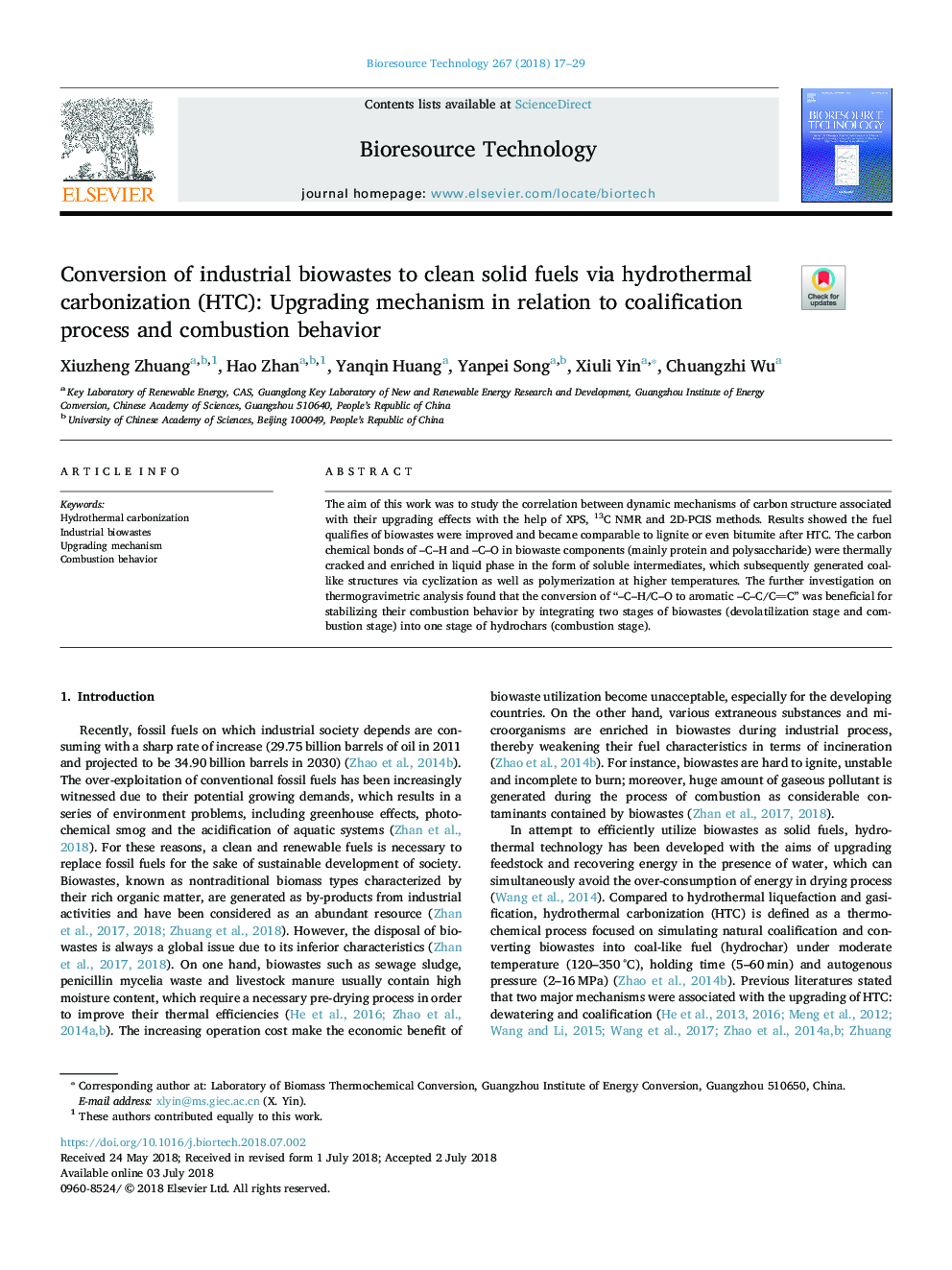| Article ID | Journal | Published Year | Pages | File Type |
|---|---|---|---|---|
| 7066270 | Bioresource Technology | 2018 | 13 Pages |
Abstract
The aim of this work was to study the correlation between dynamic mechanisms of carbon structure associated with their upgrading effects with the help of XPS, 13C NMR and 2D-PCIS methods. Results showed the fuel qualifies of biowastes were improved and became comparable to lignite or even bitumite after HTC. The carbon chemical bonds of -C-H and -C-O in biowaste components (mainly protein and polysaccharide) were thermally cracked and enriched in liquid phase in the form of soluble intermediates, which subsequently generated coal-like structures via cyclization as well as polymerization at higher temperatures. The further investigation on thermogravimetric analysis found that the conversion of “-C-H/C-O to aromatic -C-C/CC” was beneficial for stabilizing their combustion behavior by integrating two stages of biowastes (devolatilization stage and combustion stage) into one stage of hydrochars (combustion stage).
Related Topics
Physical Sciences and Engineering
Chemical Engineering
Process Chemistry and Technology
Authors
Xiuzheng Zhuang, Hao Zhan, Yanqin Huang, Yanpei Song, Xiuli Yin, Chuangzhi Wu,
